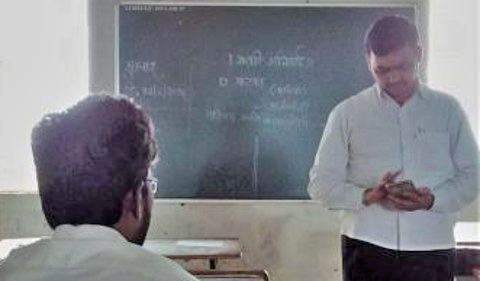By Richard Morris, ’20
Dr. Matthew Rosen and Dr. Briju Thankachan presented “Informal Practices and Innovations in Teaching and Learning: BYOD in Indian Classrooms” at the 2018 Association for Educational Communications and Technology International Convention in Kansas City, Mo.
Rosen, Assistant Professor of Anthropology at Ohio University, and Thankachan, Director of Curriculum and Assessment Design and Improvement at Ohio’s Heritage College of Osteopathic Medicine, have been been collaborating since 2016 on research into the use of technology in Indian classrooms.
Unlike schools in America, which use the acronym “BYOD” (bring your own device) in reference to a student’s own tech devices, Indian classrooms are typically more limited in their access to technology. The onus instead falls on the teacher to bring their own phone for class-wide internet access.
One teacher referred to at the convention, who is employed in Malayalam literature at a Government Model High School in Thiruvananthapuram (the capital of Kerala), was asked if she uses technology in the classroom. “Only a little,” she said. “We don’t have facilities. It’s a problem.”
Another interviewed teacher said he uses his phone to help engross students in the poetry they are reading. He said it is important to be able to reach students with the essence of the poem—and does so by playing the author’s recitation over his phone to the class, such as the renowned Indian poet Kadammanitta. When asked how he gets the resources for this, the teacher responded that he and colleagues from other schools “exchange the materials through WhatsApp groups.”
Rosen and Thankachan conducted their research through surveys, interviews, and participant observations. They did so across four different kinds of high schools (model, public, aided, and all-girls) located in urban and rural locations in Kerala, South India, and one college in rural Maharashtra in Western India.
Their conclusions, Rosen notes, were mostly in line with what they expected. Both teachers and students embraced technological innovation, while the schools were mostly held back by funding limitations.

















Comments